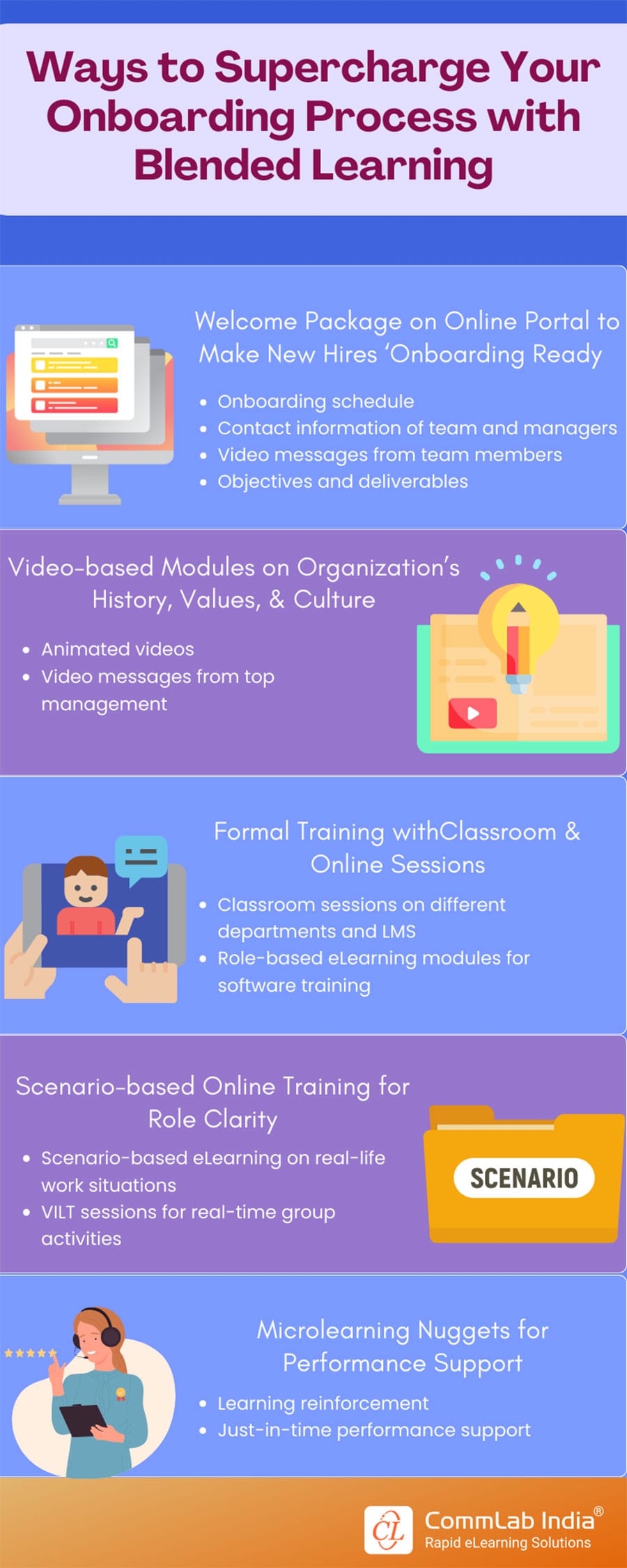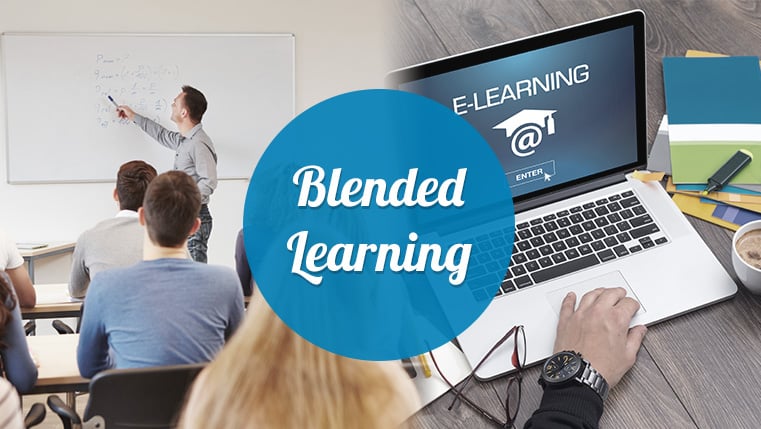Ways to Supercharge Employee Onboarding with Blended Learning [Infographic]
Revitalize your employee onboarding process by incorporating blended learning which ensures a well-rounded and engaging learning experience for new hires.

Embark on a revolutionary approach to employee onboarding with the power of blended learning. In a world where traditional methods often fall short, blending the best of online and offline training becomes a game-changer. This personalized approach integrates the strengths of instructor-led sessions with the flexibility and accessibility of eLearning modules.
Imagine a scenario where new hires engage in interactive online courses, supported by hands-on sessions and face-to-face interactions. Blended learning harmonizes these elements, fostering a comprehensive onboarding experience. Join us as we explore how this dynamic blend optimizes knowledge retention, adapts to diverse learning styles, and paves the way for a seamless transition into the organizational culture. Welcome to a new era of onboarding where flexibility meets efficacy.
Leveraging Blended Learning for Employee Onboarding
In the realm of employee onboarding, leveraging blended learning proves to be a strategic approach that seamlessly blends online and offline learning. By incorporating a mix of in-person sessions, eLearning modules, and interactive online sessions, blended learning caters to diverse learning styles, ensuring a comprehensive and engaging onboarding experience for new employees.
This approach not only provides a flexible and personalized learning journey but also enhances retention and application of information.
→ Download Now: Is Blended Learning The Right Choice for You? [Questionnaire]
Here are the main advantages that blended learning for employee onboarding provides to both organizations and employees:
For Organizations
1. Efficiency
Blended learning accelerates the onboarding process, saving time and resources by efficiently combining online and in-person components.
2. Consistency
The standardized training delivered through online modules ensures that every new employee receives the same foundational information, maintaining consistency across the organization.
3. Flexibility
Blended learning adapts to the specific needs of the organization, allowing for customization and tailoring of training content based on roles or departments.
4. Team Building
Incorporating in-person elements in the onboarding process facilitates face-to-face interactions, promoting team building, and fostering a sense of camaraderie among new hires.
For New Hires
1. Personalization
Blended learning accommodates diverse learning styles, offering a personalized learning experience that suits individual preferences and needs.
2. Flexibility
Employees have the flexibility to progress through the training at their own pace, ensuring a comfortable and supportive learning environment.
3. Engagement
The combination of online and in-person interactions enhances engagement, keeping employees actively involved and contributing to better retention of knowledge.
4. Collaboration
In-person components of blended learning encourage collaboration among new hires, creating opportunities for networking, relationship-building, and an efficient integration into the company culture.
How to Implement Blended Learning for Employee Onboarding?
Wrapping it up!
The adaptability and versatility of blended learning cater to the diverse needs of new hires, ensuring a holistic onboarding experience. Organizations can truly witness improved engagement, faster knowledge retention, and better application of skills setting the stage for long-term success. As you delve deeper into employee onboarding, consider the transformative potential of blended learning to elevate your onboarding processes and empower your workforce for the challenges ahead. To initiate your exploration of blended learning across different facets of employee training, here's a checklist designed to evaluate your requirements. Access now and explore a list of 12 key considerations outlining crucial training situations where blended learning proves essential.







